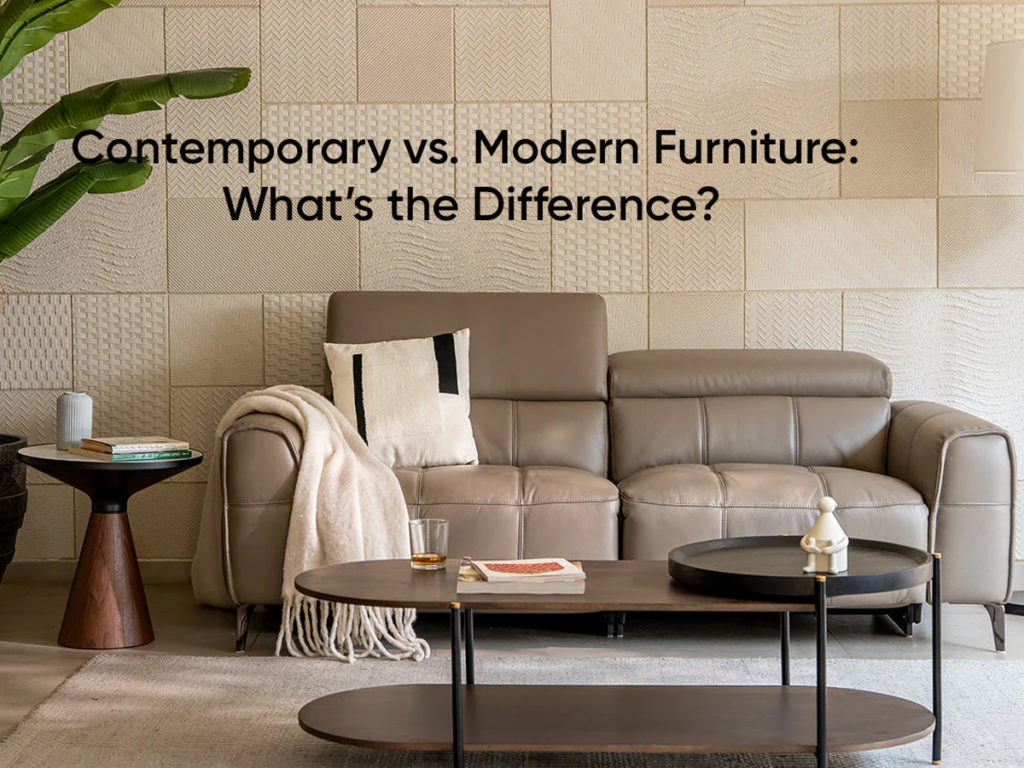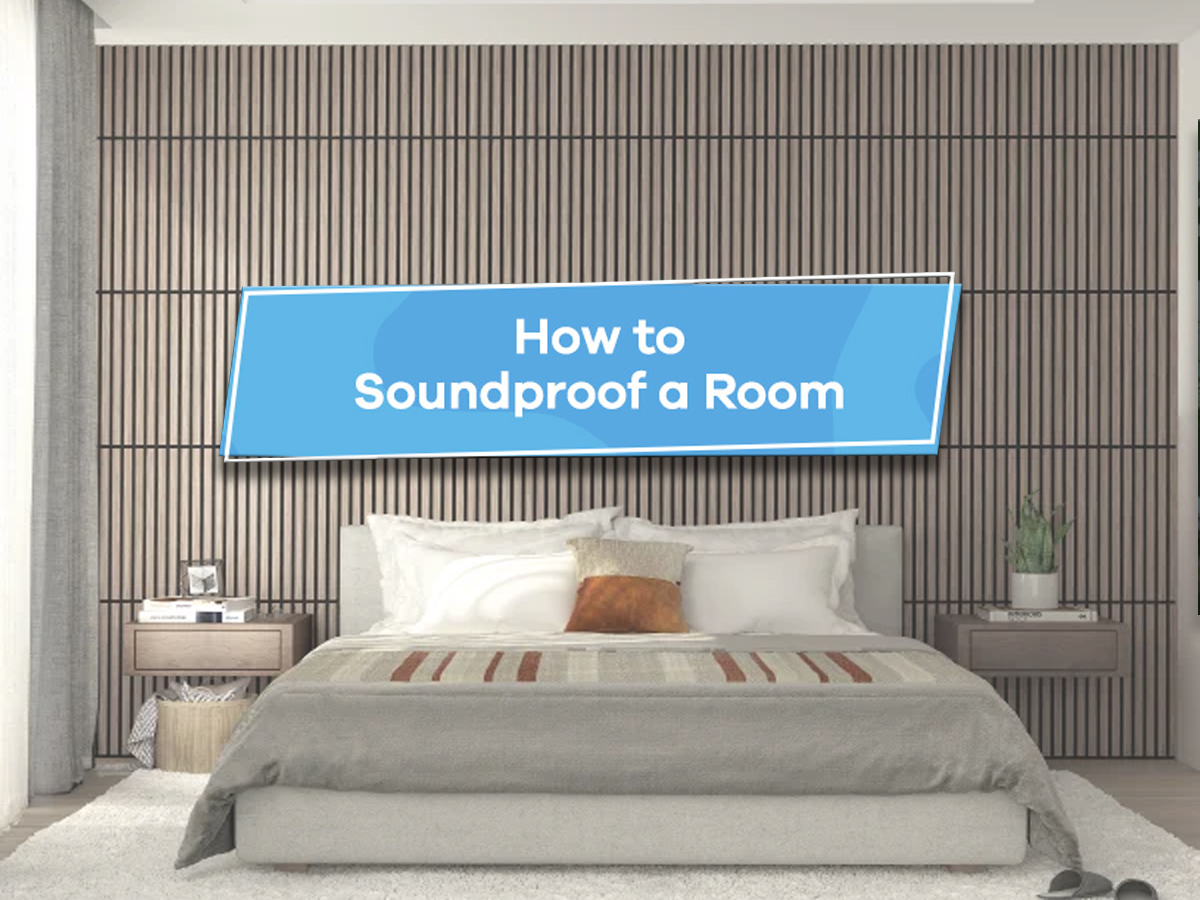
What is contemporary design in interior designing?
Contemporary interior design is an ever-evolving future-thinking style of interior designing. Defined by present-day trends, innovative materials, and hi-tech, the style is more fluid and flexible. Contemporary design emerged in the early 1970s but is still a favourite among top interior designers in India and around the world. They meet the human need for comfort, functionality, and minimal appearance. Contemporary designs draw inspiration and are subtly influenced by postmodernism which opposes austerity and formality. To understand what is contemporary design in interior design let’s consider two aspects – the difference between modern and contemporary design and the characteristics of contemporary design.
The difference between Modern and Contemporary interior design
Though modern interior design and contemporary interior design styles are mistaken for one another, they are quite different in their origins and characteristics. Modern interior design reigned between the 1920s and 1950s when the world saw an unprecedented rise in population. To cater to the huge demand, architectural and interior designs had to break away from historic styles and materials. Ornate designs were replaced by crisp straight lines and stone with concrete, focusing mainly on functionality and speed over time-consuming intricate designs and workmanship. Modern interior designs inspired by movements like Bauhaus and Scandinavian are a style of the past.
On the other hand, contemporary interior design is eclectic and refers to a design that constantly changes with the latest design trends. Not influenced by any specific design movement or tied to a historical period, it utilises colours, materials, textures, bold accents, and innovation. It adapts to cultural shifts, changes in fashion, technological inventions, and personal tastes. It draws from various styles, including modern, minimalist, bohemian, and rustic to create unique interiors. Contemporary interior design style, described as luxurious simplicity, is a warm and sophisticated style that adapts to the present. This forever-relevant ‘of-the-moment’ style is an exceptionally popular interior aesthetic for new builds and renovated homes.
While modern interior designs contain no decorations, use monochromatic palettes, and have geometric shapes and sleek silhouettes, contemporary interior designs use personalised decor items to define the space with neutral palettes and clean lines.

Characteristics of contemporary design
There are several characteristics or key elements that define Contemporary Interior Design. When considered collectively, they reveal the most visually striking and functional homes. Here are the top 12 characteristics that define contemporary design in interior designing: –
1. Minimalism
Contemporary designs focus on comfort and functionality emphasising space rather than objects. It is all about open floor plans, uncluttered spaces, and sleek unfussy lines. Contemporary designs encourage smooth flow, improve connectivity, and promote interactions. Furniture has simple shapes and curved lines. Sometimes, a striking piece of furniture is used instead of a wall to define an area or close off a space.
2. Multifunctional Furniture
With apartment square footage getting smaller, contemporary designs use multi-functional furniture. They include items like convertible sofas, storage beds, coffee tables with built-in storage, ottomans with storage, extendable tables, and modular shelving units. The designs are high on aesthetics and functionality.
3. Bold accents
Contemporary interior designs usually incorporate vibrant colours and geometric patterns in walls, furniture, furnishings, artwork, and accessories. These act as accents or focal points to create dynamic and vibrant spaces that reflect personal style. Focal points on walls, upholstery, carpets, furniture, and even tiles make a strong statement and enhance the visual appeal of the space.
4. Natural Light
Contemporary interior designs aim to maximise natural light entering a home. Skylights, large windows, floor-to-ceiling glass doors, and reflective surfaces are integrated into the design for natural lighting. Interior designers balance natural and artificial lights to create the desired look.
5. Statement Lighting
Lighting in contemporary spaces is often sculptural or artistic, making a statement in the room. It could be in the form of geometric pendants, floor lamps, or recessed lighting. Large-scale sculptural light fixtures are a key feature of contemporary design. Statement lights serve as a focal point, establish a specific mood, and add aesthetic value to a space.
6. Neutral Colours
The prominent colour palette in contemporary interiors is neutral, often dominated by hues of whites, off-whites, beige, ivory, cream, taupe, brown, and accents of other pastel colours. Since these colours are subtle and calming, sometimes they can appear flat. Hence, contemporary designs use textures or focal points to uplift the colour palette.
7. Texture and layering
Contemporary interiors use mixed materials like wood, glass, steel, stone, and concrete to add texture to a room. These materials combined with soft textiles like woollen rugs, velvet curtains, or cotton cushion covers create a visually interesting space. Layering is also used in contemporary interior design to create a well-balanced and aesthetically pleasing space.
8. Emphasis on Sustainability
Contemporary home interiors pay great attention to incorporating eco-friendly materials in their designs. Bamboo, natural stone, terrazzo, and rattan are used in the design. Energy-efficient lighting and appliances, solar energy, low-voc paints, and recycling waste are often considered in sustainable contemporary home interiors. They create aesthetically pleasing interiors while conserving resources on the planet.
9. Technology and innovation
Smart home systems, energy-efficient lighting, innovative entertainment solutions, in-built appliances, 3-D printing, smart sensors, and smart switches are integrated into contemporary designs to create intelligent and efficient homes. Every design aligns with technological advances, innovations and trends to elevate the living space.
10. Blending of Styles
Contemporary interior design embraces a fusion of styles and influences, combining elements from various design movements and cultural traditions. This eclectic approach allows for unique and personalised living spaces that reflect individual tastes and preferences. To incorporate contemporary interior design into your home, begin with an open floor plan, neutral palettes and monochromatic colour schemes. Install multi-purpose furniture with ample storage. Also, introduce textures, patterns, and accents, and complete the look with statement lighting. Lastly, ensure the design is consistent throughout the home and outdoor space to create a smooth flow and harmonious feel. Finally, you a have a stunning home that reflects you!





